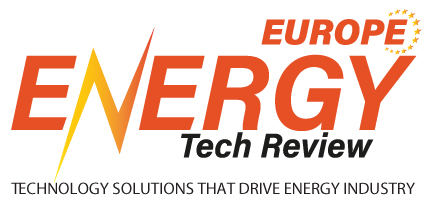CLOSE
Specials
I agree We use cookies on this website to enhance your user experience. By clicking any link on this page you are giving your consent for us to set cookies. More info
Be first to read the latest tech news, Industry Leader's Insights, and CIO interviews of medium and large enterprises exclusively from Energy Tech Review
Thank you for Subscribing
Perovskite Solar Technology: Revamping Renewable Energy Efficiency
Perovskite solar technology is rapidly advancing at the forefront of renewable energy, generating intense excitement across the photovoltaic landscape.

By
Energy Tech Review | Monday, June 02, 2025
Stay ahead of the industry with exclusive feature stories on the top companies, expert insights and the latest news delivered straight to your inbox. Subscribe today.
Perovskite solar technology is rapidly advancing at the forefront of renewable energy, generating intense excitement across the photovoltaic landscape. The industry is witnessing a robust growth trajectory, driven by relentless research and development efforts aimed at optimizing performance and preparing for widespread adoption. The fundamental appeal of perovskite solar cells (PSCs) lies in their unique optoelectronic properties. Their crystal structure enables excellent light absorption across a broad spectrum, resulting in highly efficient energy conversion. This adaptability extends to their fabrication, enabling low-temperature, solution-based processing techniques that promise significantly lower manufacturing costs compared to conventional photovoltaic technologies.
Breakthroughs in Perovskite Efficiency
Recent breakthroughs in efficiency have been nothing short of astounding. In the realm of single-junction perovskite cells, laboratory records have consistently climbed, with certified efficiencies now reaching and even surpassing 26.7 percent. This achievement narrows the gap significantly with established solar technologies. However, the true game-changer has been the development of perovskite-silicon tandem solar cells. By layering a perovskite cell on top of a silicon cell, these tandem structures maximize light absorption across different parts of the solar spectrum, enabling them to exceed the theoretical Shockley-Queisser limit of single-junction solar cells. World records for perovskite-silicon tandem cells have reached an impressive 34.85 percent efficiency, verified by leading international certification bodies. This remarkable leap in performance positions tandem cells as a leading pathway for next-generation, ultra-efficient solar technology, with theoretical efficiency limits extending as high as 43 percent. Further research is also exploring perovskite-perovskite tandem configurations, adding another layer of versatility and potential for even higher efficiencies.
Enhancements in Material Understanding and Device Architecture
Beyond headline efficiency figures, significant strides are being made in enhancing the fundamental understanding and control of perovskite materials and device architectures. Researchers are focusing on refining film quality and uniformity, crucial for both efficiency and scalability. Advances in material engineering and surface passivation techniques are leading to improved charge transport and reduced recombination losses within the cells. The exploration of various perovskite compositions, including those based on lead-free alternatives such as tin, is expanding the material palette. However, challenges related to the stability of these alternatives are being actively addressed through innovative chemical and structural modifications. Novel surface modifiers and buried oxide interlayers are being incorporated to improve the electronic homogeneity and overall performance of the devices. However, it's essential to acknowledge that these advancements are not without their challenges. The stability of lead-free perovskites, for instance, remains a significant hurdle that requires further research and development. Addressing these challenges is crucial for the widespread adoption of perovskite solar technology.
The focus on stability and durability, although not a challenge to detail, is a testament to the maturation of the technology. Progress in this area is paramount for real-world deployment and long-term reliability. Innovations in encapsulation techniques, protective layers, and careful control of the perovskite material's interaction with the environment are leading to substantial improvements in operational lifetime. For instance, new research has demonstrated that incorporating specific nanoparticles within the cell can significantly enhance its lifespan and stability by addressing inherent material properties. This represents a crucial step toward developing high-performance perovskite solar cells that can withstand diverse climatic conditions, a prerequisite for widespread commercial adoption. Outdoor stability tests are increasingly being conducted to evaluate performance under real-life conditions, providing valuable data for further refinement and optimization.
The versatility of perovskite solar technology extends far beyond traditional rigid solar panels. Its thin-film nature, flexibility, and lightweight properties make it highly adaptable to a diverse range of applications. Building-integrated photovoltaics (BIPV) represent a significant area of growth, with perovskite cells seamlessly integrating into architectural components such as windows, facades, and roofs, offering both aesthetic appeal and energy generation. The ability to produce flexible perovskite cells on substrates such as plastic or metal foils opens doors to innovative applications in portable electronics, wearable technology, and even curved surfaces in the automotive industry. The low manufacturing and material costs associated with perovskites, combined with the potential for scalable production methods such as roll-to-roll manufacturing, are driving their adoption in these emerging sectors. This versatility not only expands the potential applications of perovskite solar technology but also opens up new markets and business opportunities.
The Growing Market and Future Prospects
The market for perovskite solar cells is experiencing substantial growth, with projections indicating a robust expansion in the years to come. This growth is underpinned by increasing global demand for renewable energy solutions and significant investments in research, development, and scaling up manufacturing capabilities. The trend toward tandem perovskite-silicon solar cells is a key market driver, as they offer a clear path to surpassing the efficiency limits of conventional silicon cells. The ongoing development of flexible and lightweight perovskite modules further expands the addressable market, enabling integration into previously inaccessible applications. It's essential to recognize the significant contributions of stakeholders, including governments, research institutions, and industry players, in driving the growth and shaping the future of perovskite solar technology.
Perovskite solar technology is characterized by continuous and rapid innovation. The consistent breaking of efficiency records, advancements in material science leading to enhanced stability, and the inherent versatility of these materials paint a promising picture for their future. As research continues to refine the performance and expand the application possibilities of perovskites, they are poised to play a transformative role in the global transition toward a cleaner, more sustainable energy landscape. The ongoing drive towards higher efficiencies, improved durability, and diverse integration pathways underscores the nature of this field within the solar energy sector.

Copyright © 2025 Energy Tech Review. All rights reserved






